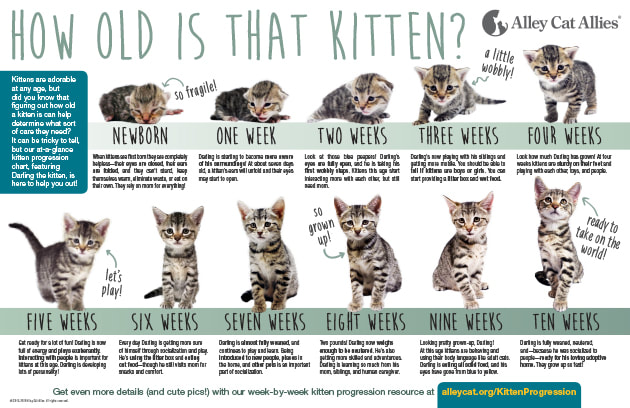FAQ's
How much is a TNR appointment?
Cost is $70 for males and $85 for females.
TNR includes use of OJK provided humane trap, transportation for cat(s) to and from vet, spay or neuter, rabies vaccine, pain medication, ear-tip, and flea preventative.
Cost is $70 for males and $85 for females.
TNR includes use of OJK provided humane trap, transportation for cat(s) to and from vet, spay or neuter, rabies vaccine, pain medication, ear-tip, and flea preventative.
When can a cat be spayed or neutered?
Kittens can be spayed or neutered at 8 weeks old or when weighting 2 pounds if age is unknown.
Kittens can be spayed or neutered at 8 weeks old or when weighting 2 pounds if age is unknown.
I found a pregnant cat what should I do?
Contact OJK as soon as possible to set up a TNR. Depending on the stage of the pregnancy it may be possible to do a spay. There is also a chance that the cat is not pregnant but has pyometra as a common symptom of pyometra is a bloated abdomen. Pyometra can be life threatening if left untreated.
Contact OJK as soon as possible to set up a TNR. Depending on the stage of the pregnancy it may be possible to do a spay. There is also a chance that the cat is not pregnant but has pyometra as a common symptom of pyometra is a bloated abdomen. Pyometra can be life threatening if left untreated.
I found a Kitten what do I do?
What to do with a kitten is largely dependent on the age of the kitten(s). Kittens under 4 weeks old are completely dependent on their mother for food, warmth, and cleaning. Kittens at this age when separated from their mother will need around the clock care including bottle feeding as frequently as every 2 hours. Kittens should be kept with their mother if possible until they are 8 weeks old.
If you find kittens without their mother do not pick them up or move them. Watch for a few hours from a hidden spot to see if the mom returns.
If the mom returns leave food, water, and shelter outside for the mom until the kittens and mom can be TNR.
If the mom does not return, remove kittens and get them to a warm environment (75-80°F) as soon as possible and contact Tiny Miracles Kitten Rescue.
What to do with a kitten is largely dependent on the age of the kitten(s). Kittens under 4 weeks old are completely dependent on their mother for food, warmth, and cleaning. Kittens at this age when separated from their mother will need around the clock care including bottle feeding as frequently as every 2 hours. Kittens should be kept with their mother if possible until they are 8 weeks old.
If you find kittens without their mother do not pick them up or move them. Watch for a few hours from a hidden spot to see if the mom returns.
If the mom returns leave food, water, and shelter outside for the mom until the kittens and mom can be TNR.
If the mom does not return, remove kittens and get them to a warm environment (75-80°F) as soon as possible and contact Tiny Miracles Kitten Rescue.
Can you relocate a cat?
Typically No. Outdoor cats are attached to their environment and if relocated may try to find their way back and can be injured or even die in that process. Relocation of a community cat is only done as a last resort if a cat is in imminent danger.
Removing cats from an area will also not ensure that an area remains cat free. Attempts to permanently remove cats results in what is called the vacuum effect. The vacuum effect is when cats are removed and new cats move in or any cats left behind continue to breed. You can learn more about the natural and scientifically documented vacuum effect here.
Typically No. Outdoor cats are attached to their environment and if relocated may try to find their way back and can be injured or even die in that process. Relocation of a community cat is only done as a last resort if a cat is in imminent danger.
Removing cats from an area will also not ensure that an area remains cat free. Attempts to permanently remove cats results in what is called the vacuum effect. The vacuum effect is when cats are removed and new cats move in or any cats left behind continue to breed. You can learn more about the natural and scientifically documented vacuum effect here.
Why do male cats need to be neutered?
Like the saying goes, “It takes two to tango”. Only spaying female cats in a colony does not effectively prevent new litters. Unaltered male cats roam much larger distances, particularly during mating season, than a neutered male does. This means that a female cat from another colony or one in the same colony who hasn’t been spayed yet could become pregnant by the unaltered male. Since neutered males are less likely to roam their chances of injury or death by an encounter with a predator or being hit by a car decreases.
Neutering male cats has health benefits as well such as eliminating the risk of testicular cancer and decreasing the risk of prostate issues. Neutered male cats are less likely to fight and thus related injuries such as FIV infection and abscesses.
Like the saying goes, “It takes two to tango”. Only spaying female cats in a colony does not effectively prevent new litters. Unaltered male cats roam much larger distances, particularly during mating season, than a neutered male does. This means that a female cat from another colony or one in the same colony who hasn’t been spayed yet could become pregnant by the unaltered male. Since neutered males are less likely to roam their chances of injury or death by an encounter with a predator or being hit by a car decreases.
Neutering male cats has health benefits as well such as eliminating the risk of testicular cancer and decreasing the risk of prostate issues. Neutered male cats are less likely to fight and thus related injuries such as FIV infection and abscesses.

Does the cat need to be ear-tipped?
Yes. Ear-tipping is the universal sign that a feral cat has been spayed or neutered. The procedure is done during a spay or neuter when the cat is under anesthesia and is a painless process. Ear-tips are easily visible from a distance which makes it easy for caretakers, trappers, and animal control to identify that a cat has been spayed or neutered. This prevents re-trapping and unneeded surgical procedures.
Yes. Ear-tipping is the universal sign that a feral cat has been spayed or neutered. The procedure is done during a spay or neuter when the cat is under anesthesia and is a painless process. Ear-tips are easily visible from a distance which makes it easy for caretakers, trappers, and animal control to identify that a cat has been spayed or neutered. This prevents re-trapping and unneeded surgical procedures.
